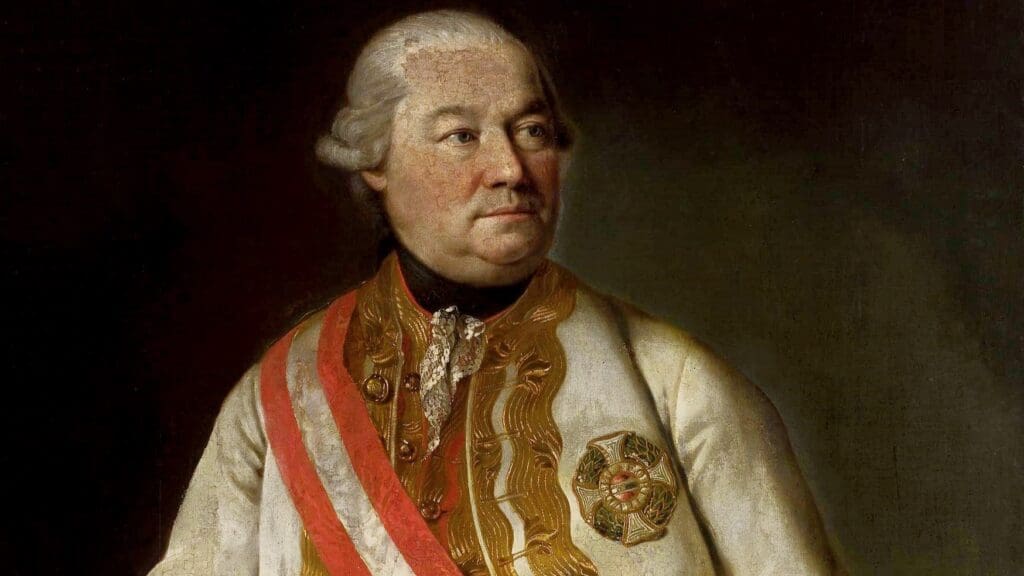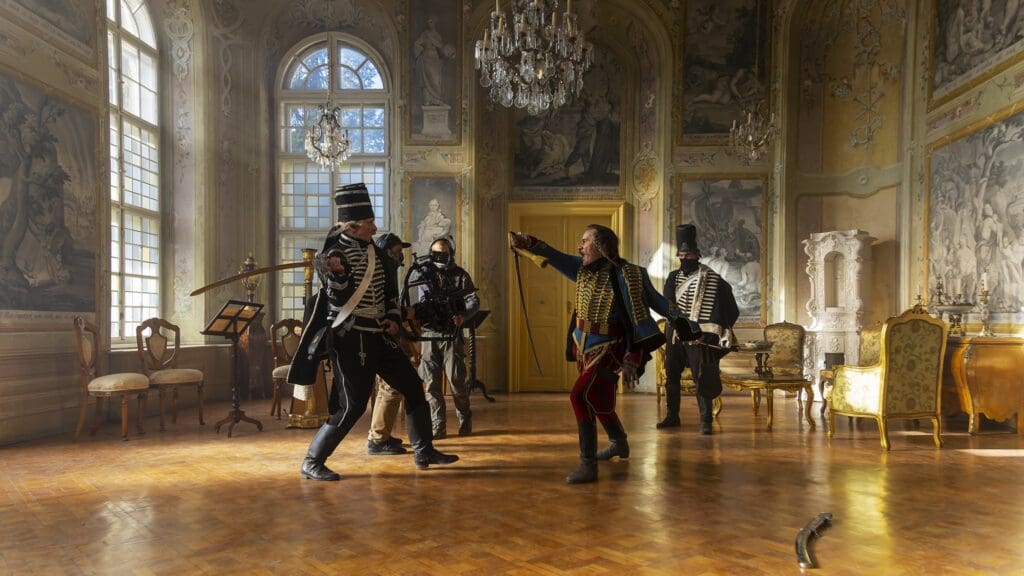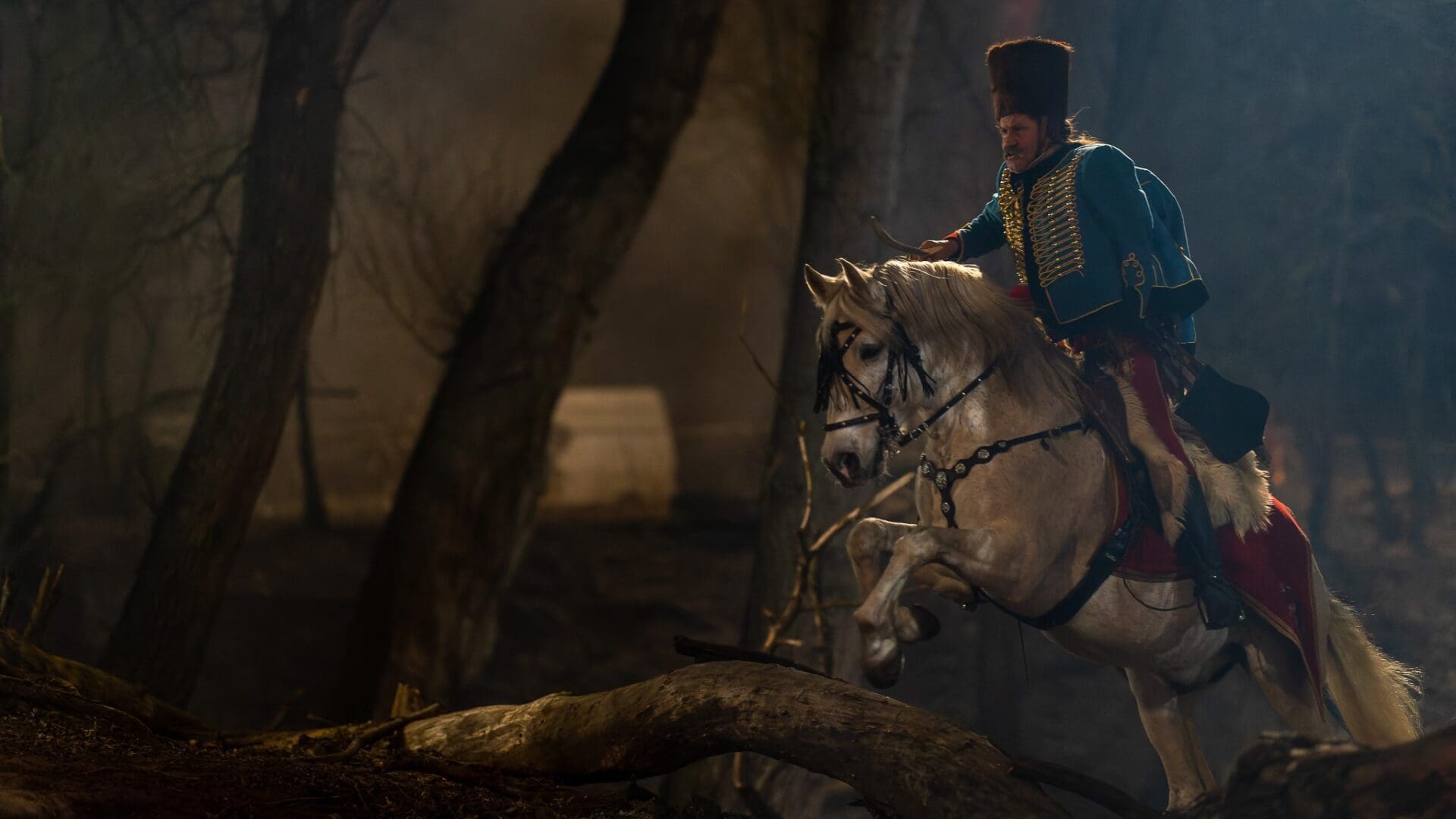In recent times, the Hungarian film industry has seen many upturns with both award-winning art films (On Body and Soul), and popular historical blockbusters (Kincsem). However, it has also churned out less fortunate products, including the controversial Elkxtuk, or the memetic and infamous Battle of Pozsony. Luckily, the recently released Hadik belongs to the previous camp.
Hungarian cinema enthusiasts, especially the right-leaning ones, have been demanding to be shown so-called ‘great historical movies’ for decades. Finally, films narrating glorious and less glorious chapters of Hungarian history were made one after the other, with Kincsem, telling the story of Hungary’s best-ever, legendary racing horse, being the first in line. Unfortunately, some recent attempts in this field have become the laughing stock of the genre, not only according to liberal critics, but also by most of the wider, apolitical audience.
Elkxtuk, a film about the infamous Őszöd speech and its circumstances, while having some exciting scenes, essentially served as a political campaign video against DK prime ministerial candidate Klára Dobrev (Ferenc Gyurcsány’s wife) and the opposition, rather than being a genuine historical account. Truth be told, it was self-professedly a piece of fiction, rather than a work based on hard facts. Another piece, a series, Aranybulla, spectacularly failed to find its spot between the genre of low-key historical adventure motion picture and a narrated documentary series. We are still to see the feature film version in cinemas, so that may improve its overall assessment. And finally, the Battle of Pozsony was so visibly terrible that even its creators distanced themselves from it.
However, this year gave us not only one, but two very well-done historical movies. Blokád tells the story of József Antall, Hungary’s first democratically elected Prime Minister, through one particular key occurrence under his premiership, the taxi divers’ blockade of the country in protest of radical petrol price hikes. While Hadik is a biographical film about the legendary András Hadik, Hungarian nobleman, hussar officer, and Field Marshall of the Austrian Imperial Army, who successfully captured Berlin. While not able to match big budget works with grandiose battle scenes, Hadik is a step in the right direction. In fact, one of its virtues is that
it knows exactly what it aims to accomplish.
It is a compact film, with a straight and focused storyline. It does not promise to show us world-changing events. It is nothing less and nothing more than a homage to the bravery of András Hadik and the hussar light cavalrymen.
Historical Background
The War of Austrian Succession (1740–1748) was fought because although Maria Theresa did inherit the throne of the Habsburg Empire, the female line of succession had only recently been introduced by the Pragmatica Sanctio. European powers like Prussia, France, and Bavaria used it as a pretext to claim the throne of Austria and attack it. The war resulted in Maria Theresa gaining international recognition but also losing the industrialized Silesia to Prussia. The empress owed this less-than-disastrous result largely to the loyalty and support of the Hungarian nobility, which gallantly stood up for her, and supported the war efforts. Among them was András Hadik. This war was not only one of the starting points of his military career, but also a catalyst of his meteoric rise.

The Seven Years War (1756–1763) was, on the other hand, an even more classic great power conflict for more territory, especially with regard to the provinces of the two empires. Austria joined in to regain Silesia from Prussia. However, this failed, Prussia being able to keep the territory. Regardless, Austria also saw victories during this war,
one of the most memorable ones among them being the Sack of Berlin, on 16 October of 1757.
With his military genius, Hadik timed the attack to when the main Prussian forces were fighting in Silesia, leaving only a small garrison to defend Berlin. Hadik swiftly advanced toward the capital city and took it in a one-day battle. Upon his triumph, he successfully demanded a sizable ransom from the citizens, after which he quickly left the scene. While it was not a decisive victory in the war, it was an impactful psychological victory and propaganda triumph, which proved the Hungarian hussars as a still modern and successful military unit once again.

The Film
The film starts with a battle scene between Hungarian hussars, fighting alongside Austrian forces, and the Prussian cavalry, during the War of the Austrian Succession. Hussar leader Hadik, still a mid-ranking officer, ambushes the Prussians, stealing valuable battleplans and documents from them. Being pursued by the German troops, he must engage in a single combat with Colonel von Bock, with whom Hadik develops a lifelong and deadly rivalry.
After the war, Hadik is seen retired, and living an idyllic and peaceful life with his family and serfs. These pictures are less than thinly veiled copycats of the ‘tranquil-before-the-storm’ scenes of The Patriot, even if a serf-lord relationship is a much lighter one than that between master and (supposedly freed) slaves in the Mel Gibson film.
Another clichéd part is how Hadik and his men are called back to service upon the outbreak of the Seven Years War. This is when the Queen of Hungary and Empress of Austria, Maria Theresa, requests him to ambush the Prussians behind their lines, and sack Berlin, their capital. In reality, Hadik was probably simply recalled among thousands of other noblemen, and not specifically handpicked as some kind of Hungarian Rambo. However, he definitely was chosen on purpose to execute the perilous Berlin mission. The movie shows this in a rather fast-spaced, sometimes even haphazard manner, getting to the climax shortly. Hadik and his men take Berlin, extort the ransom, including—a historically proven fact!—a bunch of female gloves, as a gallant gift for the queen. At the end of the film Hadik defeats von Bock, and safely returns to his family.
Among the huge merits of the film is that it does not try to radiate a fake air of grandiosity.
The synopsis is about a smaller scale commando action, commonly known as a ‘hussar prank’. The plot navigates safely between so-called ‘de-heroization’, fashionable in recent Hollywood films, and the ridiculous over-the-top portrayals of historical figures of contemporary Chinese or older American pieces. Hadik and his troops are chivalrous, valiant, but not almighty. They are swift and ingenious rather than strong. On the other hand, the Prussians, including the titular ‘main villain’, von Bock, are not actually sinister characters either.
Bocks’s final scene is especially strong and also very different from the popular Hollywood or Disney villain deaths: after a fierce single combat with Hadik, the Colonel meets a fast and dignified death, his corpse being covered by a Prussian war flag. Therefore, the film dares to shed the Marvelesque ethos, and instead assumes the viewpoint that was default during Hadik’s time: the Seven Years War, just like other such conflicts, was a clash of two rival empires, rather than a fight between good and evil. This genuine and magnanimous approach stresses that Hadik is our hero, while does not deny von Bock also being someone else’s one.
The movie also distances itself from a cartoonish kuruc point of view, portraying Maria Theresa as a positive and benevolent character,
for whom the hussars fought gladly.
To conclude: there are of course historical inaccuracies in Hadik, sometimes for the sake of the plot. The Sack of Berlin, while a propaganda victory for Austria, was not a decisive moment of the war. Ceasefire between Berlin and Austria did not depend on it, unlike how the movie shows it. However, all in all, Hadik is still largely historically accurate. It makes the story told and the message stressed without bending the facts too much. As it was mentioned above, it is a ballad of a fast and small ‘special operation’, frankly and openly glorifying the bravery of its participants. Hadik is an ode to military valour without being militaristic, to manliness without being misogynistic or awkward, and to patriotism without being chauvinistic. It gives us a hero the Hungarian audience both deserves and needs.
Related articles:







